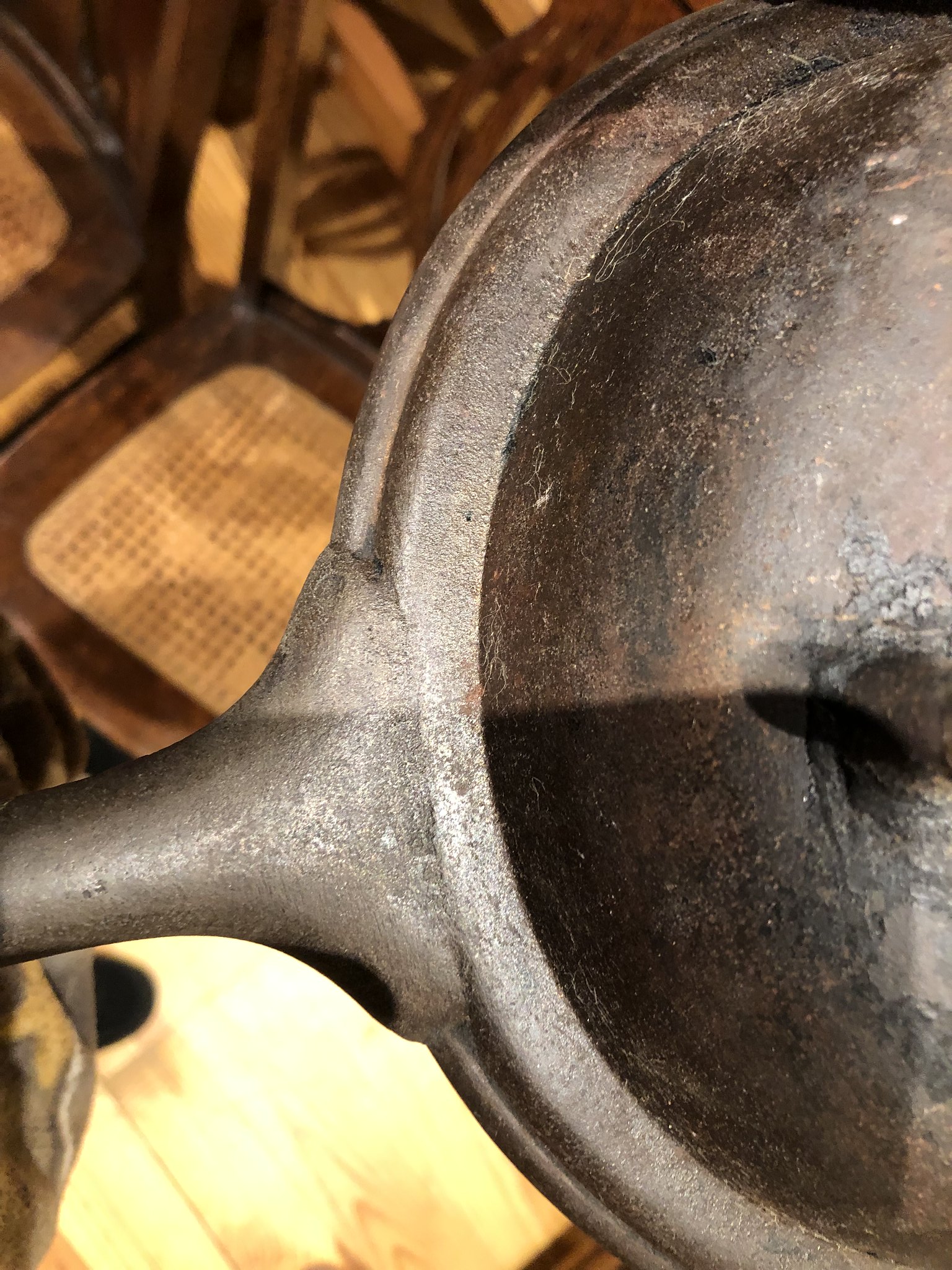Jeffrey R.
Well-known member
It is not always the big picture that tells you a story, it could be the little picture that is the story by it's self.
I needed a fix for my iron addiction so I went on a hunt. But I am at a cross roads is it a Repair or just Unique way of attaching the handle with extra support during the casting.
Look at the handle at the rim of the spider. I see 3 pin like indents for Pins?
Your thoughts are welcome.
Spider
 Spider Cast Iron ca. 1840 - 1860 by Jeffrey R., on Flickr
Spider Cast Iron ca. 1840 - 1860 by Jeffrey R., on Flickr
Clean lines at the rim & handle
 Spider Cast Iron ca. 1840 - 1860 by Jeffrey R., on Flickr
Spider Cast Iron ca. 1840 - 1860 by Jeffrey R., on Flickr
Rim at Handle
 Spider Cast Iron ca. 1840 - 1860 by Jeffrey R., on Flickr
Spider Cast Iron ca. 1840 - 1860 by Jeffrey R., on Flickr
Bottom of Handle
 Spider Cast Iron ca. 1840 - 1860 by Jeffrey R., on Flickr
Spider Cast Iron ca. 1840 - 1860 by Jeffrey R., on Flickr
I needed a fix for my iron addiction so I went on a hunt. But I am at a cross roads is it a Repair or just Unique way of attaching the handle with extra support during the casting.
Look at the handle at the rim of the spider. I see 3 pin like indents for Pins?
Your thoughts are welcome.
Spider
 Spider Cast Iron ca. 1840 - 1860 by Jeffrey R., on Flickr
Spider Cast Iron ca. 1840 - 1860 by Jeffrey R., on FlickrClean lines at the rim & handle
 Spider Cast Iron ca. 1840 - 1860 by Jeffrey R., on Flickr
Spider Cast Iron ca. 1840 - 1860 by Jeffrey R., on FlickrRim at Handle
 Spider Cast Iron ca. 1840 - 1860 by Jeffrey R., on Flickr
Spider Cast Iron ca. 1840 - 1860 by Jeffrey R., on FlickrBottom of Handle
 Spider Cast Iron ca. 1840 - 1860 by Jeffrey R., on Flickr
Spider Cast Iron ca. 1840 - 1860 by Jeffrey R., on Flickr



